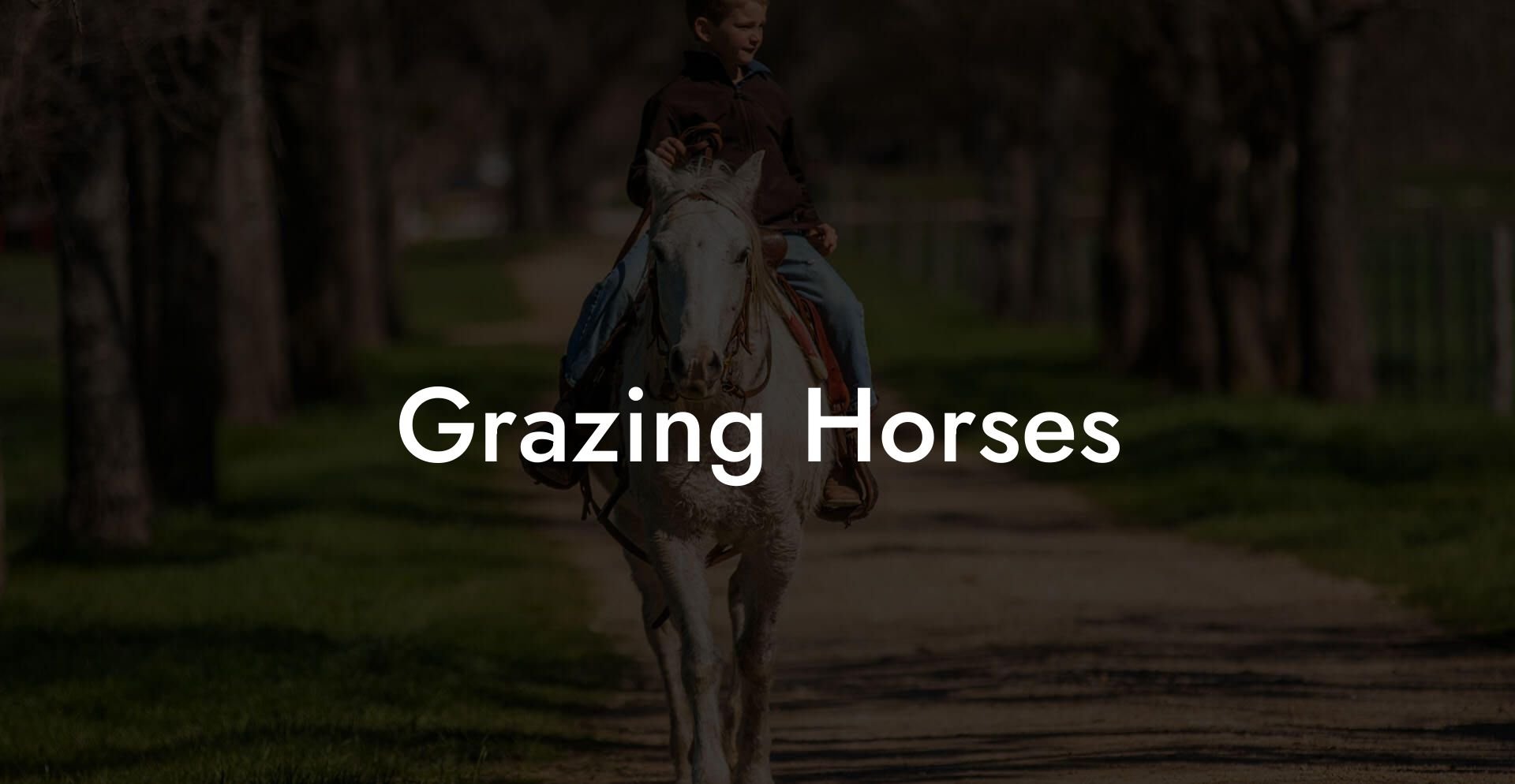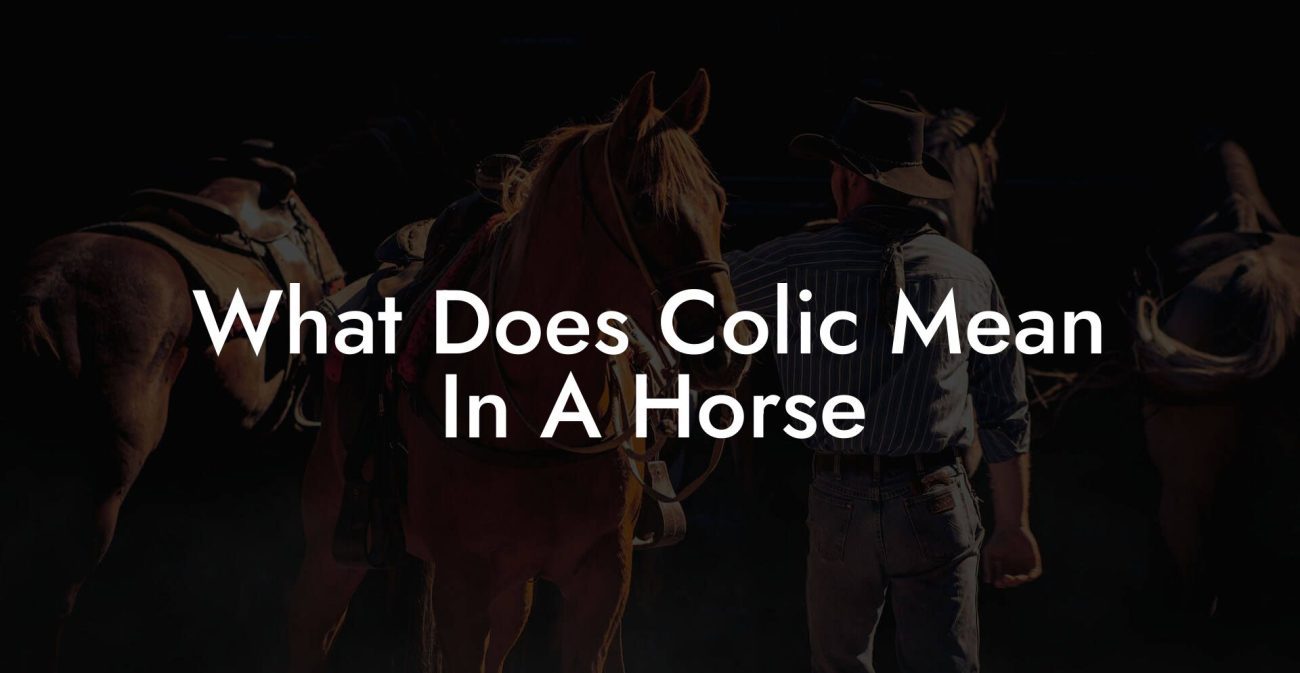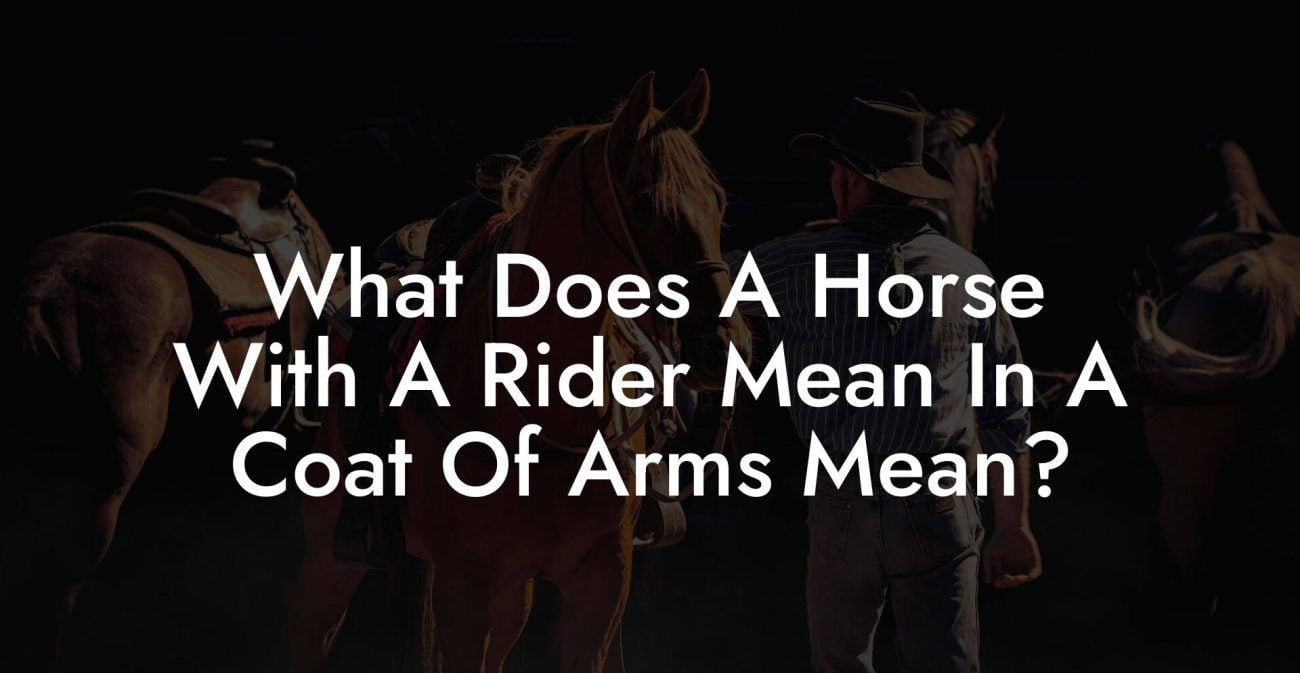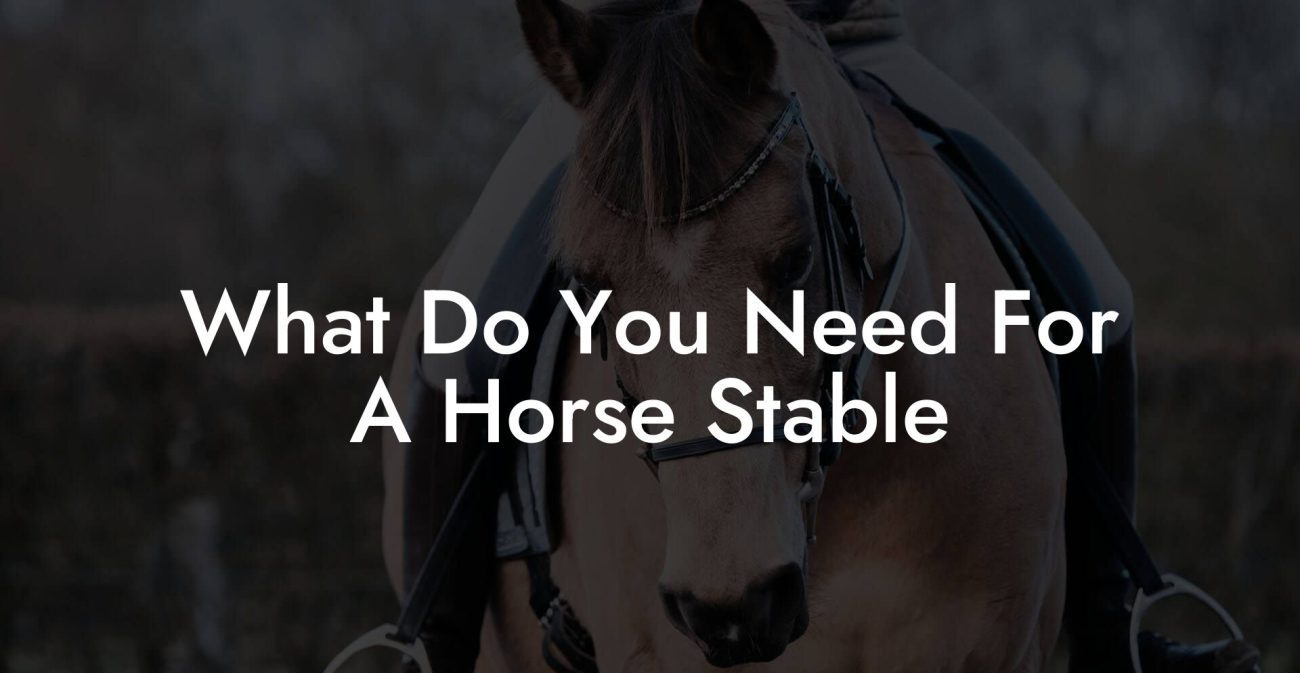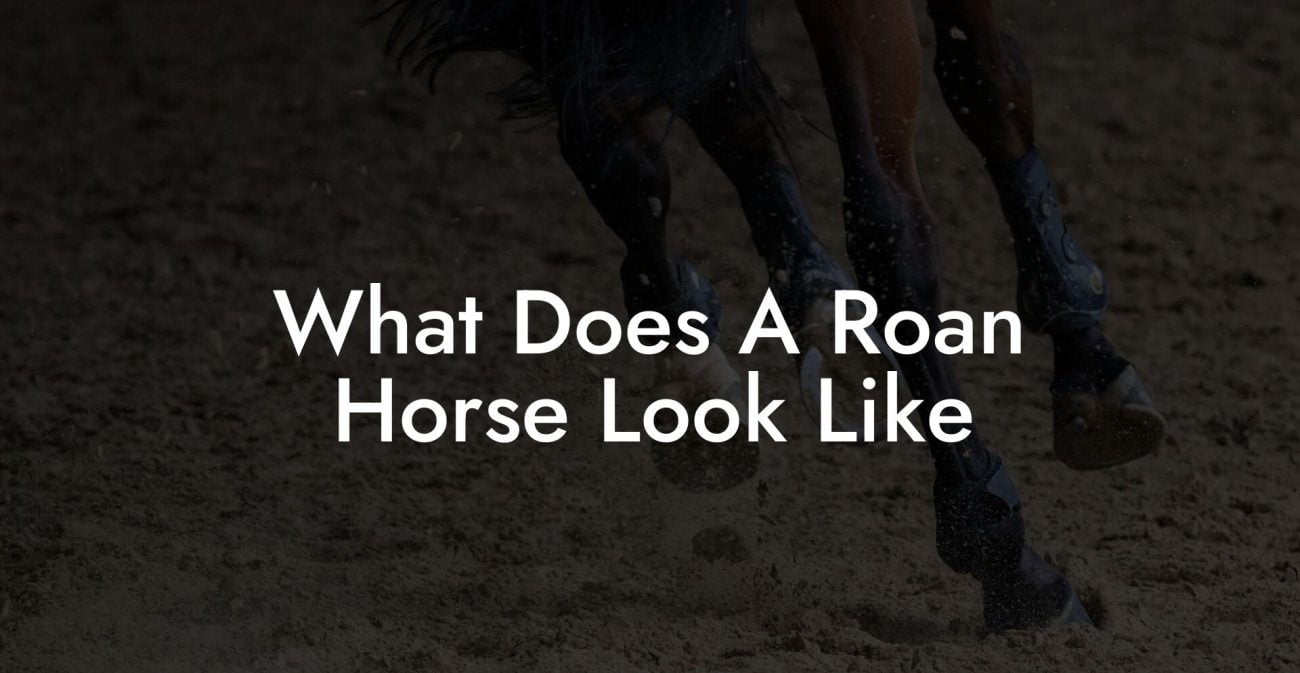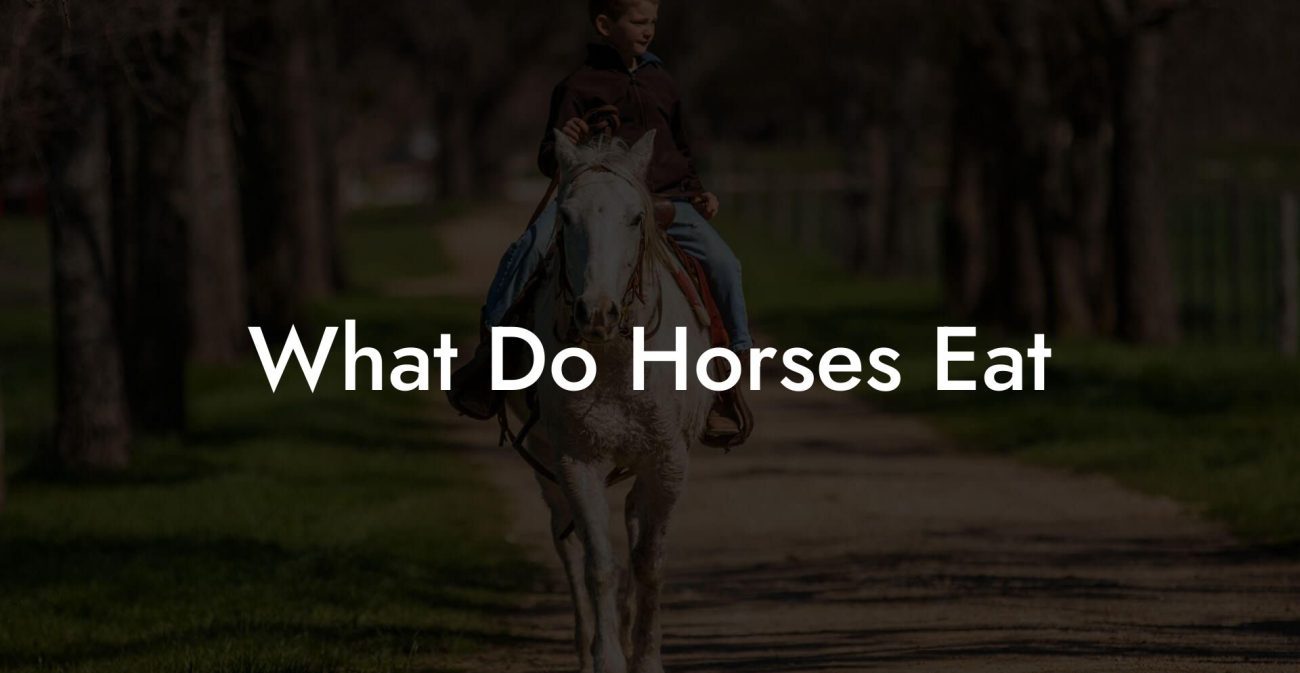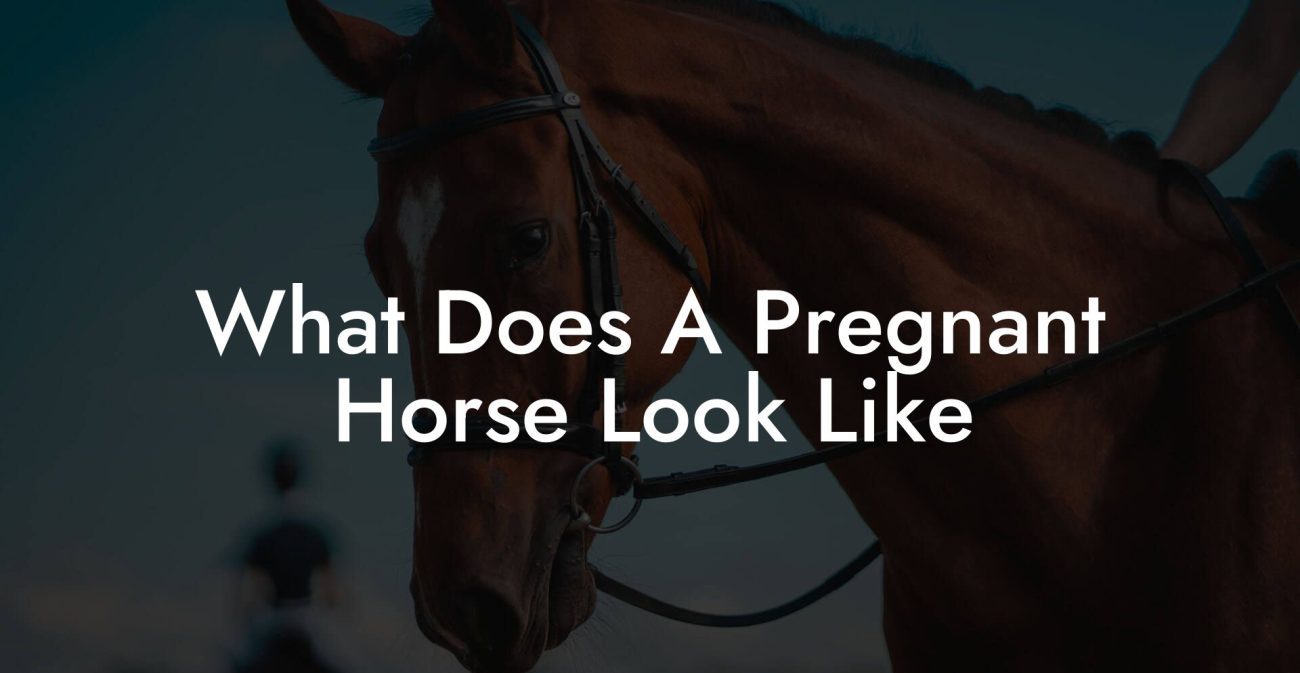Ever wondered what it feels like to hang out with a four-legged, free-spirited friend that grazes like a boss, soaking up the sun and munching on the freshest greens? Grazing horses aren’t just about looking majestic in a pasture; they’re about embracing nature’s rhythm, living sustainably, and enjoying a lifestyle that’s as chill as it is wild. If you’re a Gen-Z or millennial adventurer keen on learning how to care for a horse, we’re diving into the art and science of grazing horse care, where nature meets modern management, and every blade of grass tells a tale.
Quick Links to Useful Sections
- Understanding the Grazing Lifestyle
- The Unique World of Grazing Horses: nutrition, Movement, and Pasture Dynamics
- Creating the Perfect Pasture: Land Management, Plant Diversity, and Eco-Friendly Practices
- 1. Soil Health and Testing
- 2. Diverse Plantings
- 3. Pasture Rotation
- 4. Eco-Friendly Maintenance
- Caring for Your Grazing Horse: Daily Rituals and Best Practices
- Morning Check-Ins
- Feeding Schedules
- Hydration and Health Monitoring
- Social and Mental Stimulation
- Overcoming Challenges: Health, Behavioral, and Environmental Issues
- Parasite Control
- Weather Extremes
- Behavioral Issues
- Environmental Degradation
- Innovative Techniques and Sustainable Practices for Grazing Management
- Smart Fencing and Tracking
- Integrative Rainwater Harvesting
- Eco-Friendly Pasture Renovation
- Community and Cooperative Grazing
- Case Studies: Real-Life Stories from Grazing Horse Enthusiasts
- The Urban Rancher
- A Leap Toward Sustainability
- A Community Reborn
- Designing Your Personalized Grazing Management Plan
- Step 1: Assess Your Environment
- Step 2: Define Your Horse’s Needs
- Step 3: Incorporate Technology and Best Practices
- Step 4: Monitor, Adjust, and Innovate
- Resources and Community Support: Your Next Steps
- Join Online Communities
- Attend Workshops and Webinars
- Utilize Local Resources
- Build Your Knowledge Base
- Frequently Asked Questions About Grazing Horses
- Embrace the Journey: Your Grazing Horse Adventure Begins Now
Understanding the Grazing Lifestyle
Grazing horses live a life of freedom and natural balance. Instead of confining them to stables or restrictive routines, grazing promotes an environment where horses can roam, explore, and feast on nutrient-rich pastures. This isn’t just about letting a horse eat grass, it’s about creating a lively ecosystem where your equine buddy and their environment thrive together.
The grazing lifestyle taps into the horse’s natural behavior. In the wild, horses spend hours grazing, moving, and socializing with their herd. Modern grazing practices try to replicate these conditions, ensuring that your horse remains healthy, happy, and full of zest. And let’s be honest, watching a horse gracefully gallop across a sun-drenched pasture is nothing short of magical.
For those who have always thought of horses as these massive, serious creatures, the truth is: grazing horses are the ultimate free spirits. They live in harmony with nature’s cycles, and with a bit of thoughtful planning, you can make that lifestyle a sustainable reality, whether you’re in an urban setting with access to spacious fields or a rural haven.
The Unique World of Grazing Horses: nutrition, Movement, and Pasture Dynamics
Just like us, horses need a balanced diet to keep their energy levels high and their coats shiny. But while commercial feeds might be the go-to for many, grazing opens up a whole new world of natural nutrition. When horses graze, they’re not only indulging in the natural flavors of fresh grass, but they’re also obtaining a mix of vitamins, minerals, and enzymes that are often missing in processed feed.
From a nutritional standpoint, grazing has several benefits:
- Natural Fiber Overload: Fresh, lush pasture is full of the fiber your horse needs to maintain a healthy gut and proper digestion.
- Low Starch, High Energy: Contrary to high-starch feeds, grazing offers a slow and steady energy release, ideal for horses that are continuously on the move.
- Essential Micronutrients: Pastures contain essential vitamins and minerals such as Vitamin A, Vitamin E, and magnesium, which support overall equine health.
- Hydration Boost: Grazing is often paired with natural water sources, ensuring that your horse is not only well-fed but also well-hydrated.
But nutrition is only part of the story. Grazing horses also engage in natural, low-impact exercise simply by moving around their pasture. This constant movement contributes significantly to their joint health and muscle tone, offering a holistic approach to physical fitness that’s hard to replicate in an enclosed arena.
The pasture is more than just a dining hall, it’s an interactive ecosystem. The variety of grasses, clover, and wildflowers not only provides diverse nutrition but also supports natural behaviors such as foraging and social interaction. For horses, these interactions are vital for mental well-being, preventing boredom and reducing stress.
Creating the Perfect Pasture: Land Management, Plant Diversity, and Eco-Friendly Practices
Crafting a pasture that’s as nourishing as it is sustainable is a blend of art, science, and a little bit of magic. Here are some top tips for setting up an ideal grazing environment:
1. Soil Health and Testing
Think of the soil as the foundation of your pasture’s health. Conduct regular soil tests to evaluate nutrient levels, pH balance, and organic matter content. This helps you determine which amendments are necessary to create a nutrient-dense turf that supports both your horses and the ecosystem.
2. Diverse Plantings
A diverse pasture is a resilient pasture. Mix grasses like Bermuda, fescue, and rye with legumes such as clover and alfalfa. This not only supports better nutrition for your horse but also prevents overgrazing and promotes biodiversity.
3. Pasture Rotation
Mimic nature by rotating your horses between different grazing sections. This technique, known as rotational grazing, prevents soil degradation, controls parasite loads, and ensures that the grass has time to recover. Rotational grazing is like giving your horse a VIP pass to the best dining tables on a constantly renewed buffet.
4. Eco-Friendly Maintenance
Keep your pasture green and healthy by avoiding overuse of chemical fertilizers and pesticides. Instead, opt for organic compost, natural weed control, and integrated pest management practices that maintain the delicate balance of the ecosystem.
And let’s not forget water: establishing natural water sources like ponds or streams can play a critical role in creating a balanced microclimate that benefits all the flora and fauna in your pasture.
Caring for Your Grazing Horse: Daily Rituals and Best Practices
Transitioning from traditional stable care to a grazing lifestyle doesn’t just happen overnight. It involves a series of daily routines and care practices that keep your horse in peak condition, all while aligning with modern, sustainable principles.
Morning Check-Ins
Start your day with an outdoor check-in. Take a stroll around the pasture to look for signs of hunger, injury, or unusual behavior. Horses are super communicative with body language, so be sure to interpret their cues. A flick of the tail or a sudden burst of energy can tell you a lot about what’s happening in their world.
Feeding Schedules
While grazing often means unlimited access to pasture, supplementing your horse’s diet might be necessary during winter or in times of drought. Integrate hay, grains, or specialized supplements to balance out any nutritional shortfalls. Remember: balance is key.
Hydration and Health Monitoring
Ensure that your horses have constant access to clean water. Seasonal changes might require adjustments to your water management plan. Additionally, regular health checks including hoof care, dental check-ups, and parasite control are essential for keeping your grazing companion happy and healthy.
Social and Mental Stimulation
Grazing horses are naturally social and curious. Facilitate social interactions by maintaining herds and providing opportunities for play. Engaging with your horse during grooming or simply spending time in their environment helps build a strong, trust-based relationship.
A tip for modern horse enthusiasts: integrate technology where possible! From tracking apps that monitor grazing patterns to wearable devices that check vital signs, a little tech-savvy can go a long way in ensuring the optimal care of your majestic mate.
Overcoming Challenges: Health, Behavioral, and Environmental Issues
Even in the idyllic setting of open pastures, grazing horses face their own set of challenges. Understanding these hurdles, and knowing how to tackle them, is crucial for any modern horse caretaker.
Parasite Control
One of the major pitfalls of grazing is the risk of parasitic infections. Regular fecal tests and strategic deworming routines are necessary to keep these unwelcome guests at bay. Rotational grazing practices can also significantly reduce parasite loads by preventing over-concentration in any one area.
Weather Extremes
Nature doesn’t always play nice. From scorching summers to freezing winters, weather can alter pasture conditions dramatically. Make sure you have contingency plans:
- Provide shade structures or natural tree cover for sweltering days.
- Set up windbreaks and insulated shelters during harsh winters.
- Monitor grazing conditions closely during transitional seasons to adjust feed and water supply accordingly.
Behavioral Issues
Horses, like people, can sometimes have off days. Herd dynamics may shift, resulting in occasional bouts of aggression or anxiety. Provide a safe, secluded area for horses that need a break from the herd, and consult with an equine behaviorist if aggressive trends persist.
Environmental Degradation
Overgrazing can lead to soil compaction, weed invasion, and eventual pasture degradation. Combat these issues by implementing strict grazing rotations, providing rest periods for each section, and managing water resources carefully. Sustainable pasture management ensures that your horses continue to enjoy nutrient-rich, expansive grazing grounds.
Facing these challenges head-on with a keen understanding of both natural behavior and modern management practices can transform potential setbacks into opportunities for growth and improvement.
Innovative Techniques and Sustainable Practices for Grazing Management
For the environmentally conscious horse lover, sustainability is more than just a buzzword, it’s a way of managing your pasture and caring for your horse in harmony with nature. Here are some innovative techniques that merge traditional wisdom with modern technology:
Smart Fencing and Tracking
Gone are the days of static fencing. Today, smart fencing systems can help manage grazing patterns by using sensors and automated gates to create temporary paddocks. Additionally, GPS tracking devices attached to your horse can provide real-time data on movement, grazing duration, and pasture usage. This tech-driven approach not only optimizes pasture management but also gives you peace of mind.
Integrative Rainwater Harvesting
Sustainable water management is key. Integrating rainwater harvesting systems into your pasture can ensure a reliable source of clean water while conserving natural resources. These systems collect rainwater, which can then be used to irrigate pastures or provide drinking water for your horses.
Eco-Friendly Pasture Renovation
Over time, even the best pastures need a little TLC. Eco-friendly reseeding, organic fertilization, and targeted weed control methods can rejuvenate tired grazing lands. Consider employing native plant species that not only enhance nutritional value for your horses but also support local biodiversity.
Community and Cooperative Grazing
For many modern caretakers, community-based grazing initiatives are gaining traction. Cooperative grazing allows multiple horse owners to share pastureland, splitting costs and resources while ensuring rotational management and improved land quality. It’s a modern-day twist on traditional herd management that harnesses the power of community.
Whether you’re an innovator at heart or simply looking to optimize your grazing approach, these sustainable practices offer practical solutions that benefit both your horse and the planet.
Case Studies: Real-Life Stories from Grazing Horse Enthusiasts
The transformation in a grazing horse’s life is best illustrated through real-life success stories. Here are a few examples that showcase how modern care, coupled with sustainable practices, makes all the difference:
The Urban Rancher
Alex, a young entrepreneur based in an urban setting, had always dreamed of owning a horse. With limited space but a passion for sustainable living, Alex converted a small plot of land into a modular pasture using portable fencing and a smart irrigation system. Through rotational grazing and community-shared access, Alex’s horse, Luna, thrived on fresh greens and an abundance of natural exercise. Luna’s glowing health spurred a local movement among city dwellers to connect with nature, proving that even in the concrete jungle, sustainable grazing is possible.
A Leap Toward Sustainability
Jasmine, a recent college grad with a flair for eco-friendly innovations, took over her family’s traditional stable with a new vision: a fully sustainable grazing system. By integrating rainwater harvesting, organic composting, and native plant re-seeding, Jasmine transformed barren fields into a vibrant, biodiverse pasture. Her diligent monitoring using GPS trackers and smart grazing fences ensured that her horses, Shadow and Blaze, enjoyed balanced nutrition and ample exercise. Jasmine’s project not only improved animal welfare but also set a benchmark for sustainable land management in her community.
A Community Reborn
In a small rural town, a group of young equine enthusiasts decided to pool their resources and create a cooperative grazing pasture. Facing economic challenges and limited land, they rotated horses among several fields, maintained strict organic practices, and held regular workshops on pasture care. The cooperative model led to reduced maintenance costs, improved pasture health, and a stronger sense of community. The initiative became so successful that it was featured in local media, inspiring more young horse lovers to adopt sustainable grazing methods.
These stories highlight that, regardless of your background or location, adopting a modern, sustainable grazing approach can lead to transformative outcomes, for both your horse’s well-being and the environment.
Designing Your Personalized Grazing Management Plan
There isn’t a “one-size-fits-all” solution when it comes to managing grazing horses. Each pasture, each horse, and each owner comes with its own set of variables. Crafting a personalized grazing management plan ensures that you address the unique needs of your equine friend while respecting the dynamics of your land.
Step 1: Assess Your Environment
Begin by evaluating your available space, soil health, water sources, and existing vegetation. Regular soil and water tests can give you a clear picture of what your land needs. This step sets the stage for a plan that is both effective and sustainable.
Step 2: Define Your Horse’s Needs
Consider your horse’s age, health, activity level, and dietary requirements. Are they young and energetic, or are they in need of a gentler regime? Understanding these factors will allow you to create a plan that ensures they get the right balance of exercise, nutrition, and rest.
Step 3: Incorporate Technology and Best Practices
Use modern tools such as GPS trackers for monitoring movement, smart fencing for managing grazing areas, and even mobile apps for recording daily observations. Integrating technology with time-tested practices like rotational grazing and organic fertilization can elevate your management plan to new heights.
Step 4: Monitor, Adjust, and Innovate
No plan is perfect from day one. Keep a detailed journal of your horse’s behavior, pasture conditions, and any challenges you encounter. Regularly review these insights and adjust your approach accordingly. Flexibility and innovation are key in adapting to the ever-changing dynamics of nature.
Crafting a personalized grazing management plan is a dynamic, ongoing process, a little like curating your very own lifestyle blog, where every update is a step closer to a healthier, more harmonious life for both you and your horse.
Resources and Community Support: Your Next Steps
No journey is complete without a community. The modern equine world is filled with resources, online forums, local clubs, and sustainability workshops that can empower you with knowledge and support. Here’s how to get started:
Join Online Communities
Whether it’s a Facebook group dedicated to sustainable grazing practices, a Reddit community sharing daily tips, or specialized forums on horse care, tapping into these networks can provide invaluable insights. Engage with fellow enthusiasts, share your experiences, and learn from seasoned professionals who have already navigated the challenges and triumphs of grazing management.
Attend Workshops and Webinars
Look for local agricultural events, equine health workshops, and webinars focusing on sustainable livestock management. These platforms not only offer the latest research and practical tips but also present opportunities to network with experts in the field.
Utilize Local Resources
Don’t overlook local agricultural extensions, cooperative farms, and community-supported agriculture (CSA) programs. These resources can offer tailored advice, hands-on training sessions, and sometimes even subsidized programs to help you optimize your pasture management.
Build Your Knowledge Base
There’s a wealth of books, podcasts, and blogs out there dedicated to sustainable grazing, equine nutrition, and eco-friendly land management. From practical guides written by experienced ranchers to research papers that leverage modern agricultural science, investing time in self-education is key.
And remember, the journey to mastering grazing horse care is as rewarding as it is challenging. By building a supportive network and harnessing the power of shared knowledge, you’re not just managing a pasture, you’re part of a global movement dedicated to sustainable, compassionate horsemanship.
Frequently Asked Questions About Grazing Horses
Curious minds always have questions. Here are some of the most common inquiries about grazing horses, along with answers that integrate both traditional expertise and modern innovations in sustainable care.
1. Why is grazing considered a healthier option for horses compared to stall feeding?
Grazing mimics a horse’s natural feeding behavior. It provides a continuous, low-starch source of nutrition, which promotes better digestion, reduces the risk of colic, and supports overall mental well-being.
2. How do rotational grazing practices benefit both horses and pasture health?
Rotational grazing prevents overgrazing and soil depletion by allowing pastures to rest and regenerate. This not only supplies your horse with nutrient-rich forage but also minimizes the spread of parasites and improves soil fertility.
3. What technology can modern horse caretakers use to monitor grazing patterns?
GPS tracking devices, smart fencing systems, and mobile app integrations can help monitor grazing duration, movement patterns, and pasture usage. These tools offer real-time insights that aid in effective pasture management.
4. Are there any specific plants or pasture mixes that are best for grazing horses?
A mix of grasses, such as Bermuda, Ryegrass, and Fescue, combined with legumes like clover and alfalfa, creates a balanced diet. This diversity ensures that horses receive a range of vitamins and minerals while promoting healthy pasture ecosystems.
5. How do I manage parasite risks when my horse is grazing freely?
Regular fecal testing, strategic deworming, and proper rotational grazing are essential in managing parasite loads. Maintaining clean water sources and removing manure piles can also reduce parasite risks.
6. What are the key components of a successful grazing management plan?
A great grazing plan includes assessing soil and water quality, ensuring a diverse mix of plants, implementing rotational grazing, integrating technology for monitoring, and staying connected with community resources for continuous learning.
7. How can sustainable practices in grazing benefit the environment?
Sustainable grazing reduces chemical runoff by minimizing the use of synthetic fertilizers and pesticides. It also enhances soil fertility, preserves local biodiversity, and promotes natural recycling of nutrients, all while maintaining the health of your horses.
8. Can I successfully manage a grazing system in an urban or suburban setting?
Absolutely! With proper planning, even small plots of land can be transformed into thriving pastures. Innovative solutions like modular fencing and community-supported grazing programs can bridge the gap between urban living and natural, sustainable horse care.
9. How important is community support in managing grazing horses?
Community support is vital. Sharing experiences, accessing workshops, and tapping into online and local networks empowers you to stay updated on best practices, troubleshoot common issues, and celebrate successes with fellow enthusiasts.
10. What role do supplements and additional feed play in a grazing regimen?
While a well-managed pasture provides most nutritional needs, seasonal changes or specific health issues may call for supplementary feed or vitamins. Always consult with an equine nutritionist or veterinarian to tailor supplements to your horse’s needs.
Embrace the Journey: Your Grazing Horse Adventure Begins Now
Transitioning to a grazing lifestyle for your horse is more than just a change in feeding habits, it’s a holistic movement toward a more natural, sustainable, and fulfilling way of life. With every step you take to enhance your pasture, you’re not only elevating your horse’s health and happiness but also embracing an eco-conscious mindset that benefits the entire planet.
Picture long, breezy afternoons as your horse nibbles peacefully among wildflowers, the sound of hooves on soft earth rhythmically blending with your laughter as you share moments of joy and discovery. This modern approach to equine care is about harnessing innovation while honoring ancient wisdom, where sustainable practices meet a love for animals and nature.
Whether you are an urban enthusiast looking to break free from the mundane or a seasoned equine lover ready to take your care techniques to the next level, the grazing lifestyle opens up a world of freedom, creativity, and connection. It’s your call to action: explore new techniques, engage with supportive communities, and build a future where every horse can graze freely and happily.
So, saddle up and embark on this adventure. The pasture is vast, the opportunities are endless, and every day is a chance to redefine what it means to care for a grazing horse. Your journey to a more harmonious, sustainable, and joyful equine lifestyle begins now, let every blade of grass, every sunlit moment, and every shared smile guide you forward.

